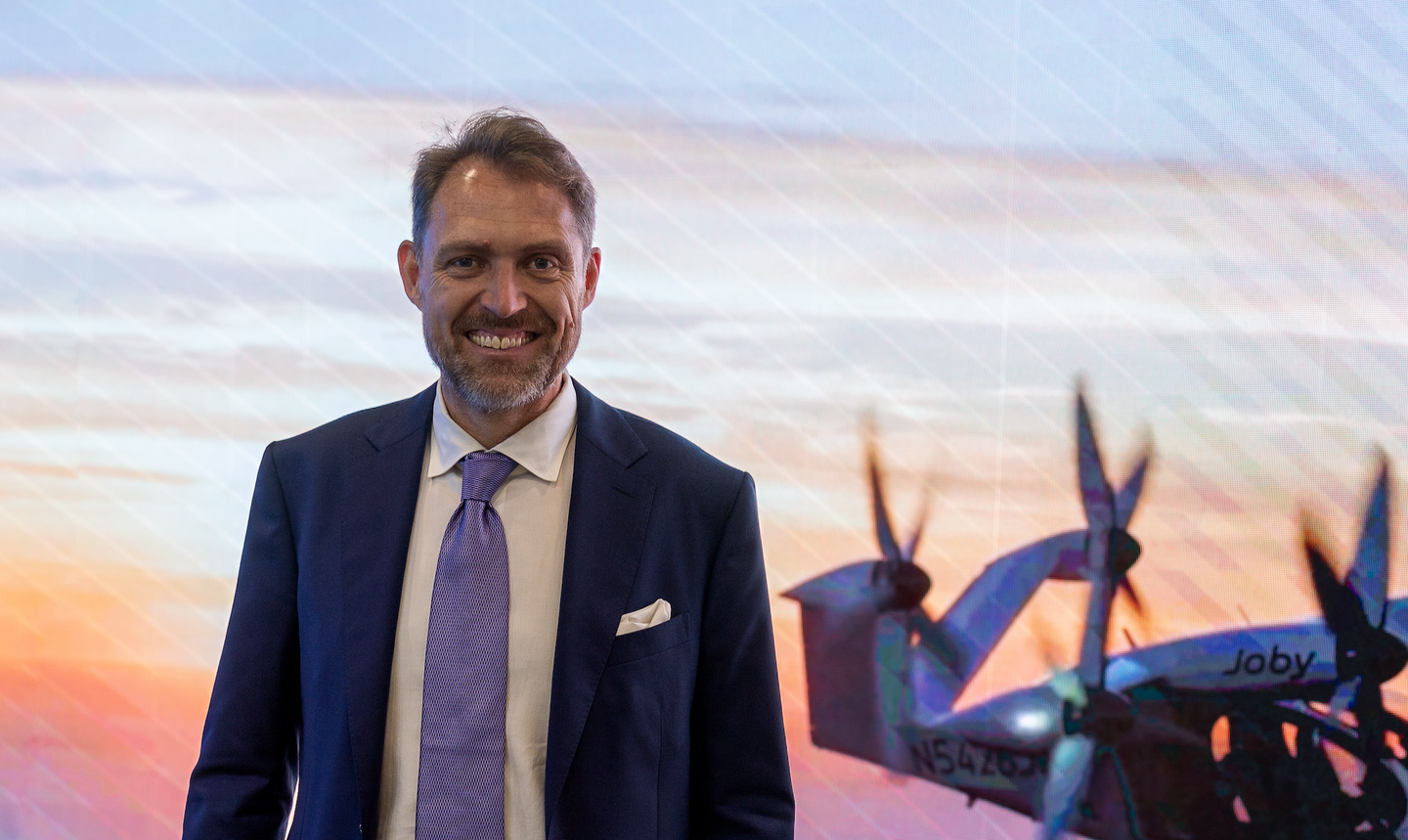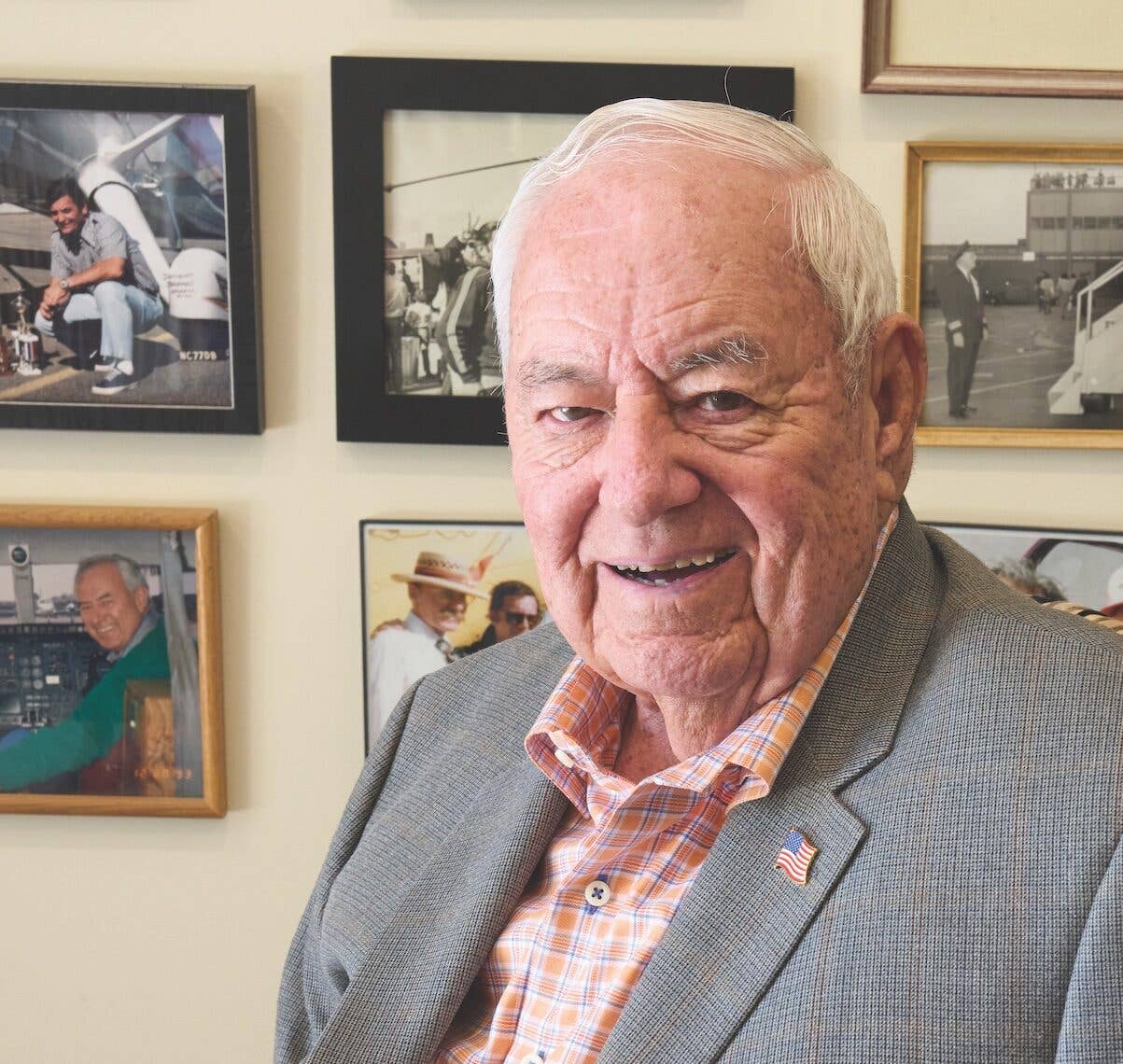A Legendary Movie Pilot Shares a Lifetime of Great Stories
J.W. “Corkey” Fornof performed breathtaking stunts for decades, but safety was always paramount.

[Photo illustration by Amy Jo Sledge]
Movie pilot J.W. "Corkey" Fornof has flown thousands of hours performing aerial film stunts that probably looked crazy to the untrained eye. However, his impeccable record shows a career-long commitment to safety at all times. In movies such as Mission: Impossible II, Six Days Seven Nights, The Phantom, Face/Off, and James Bond thrillers Licence to Kill and Octopussy—plus many others—Fornof was involved in the on-screen aerial stunt flying, not only as the pilot, but also on the teams that coordinated every mission.
Fornof’s body of work could fill a book, and in fact, it will soon, as he is currently working on his biography, My Life Is a Movie, to be released at a later date. It will be a wild ride through a career that features just about every outrageous thing you could do with an airplane while the cameras were rolling...except fly right through a billboard. That stunt was planned, but cut for one of the Bond films, and—like everything Fornof has done—had it happened, it would have been spectacular. Here’s a look at the backstory of how Fornof has done so much and lived to tell the tale.
FLYING Magazine (FM): Your 17,000-plus hours not only include movie stunt work, but also a long career as an airshow pilot and test pilot. How many performances and different aircraft fill your logbooks?
Corkey Fornof (CF): I’ve flown more than 3,000 low-level aerial performances and practice sessions as a formation team or solo in the T-6 Texan, P-51 Mustang, F8F Bearcat, Pitts Special, Bellanca Super Viking, Christen Eagle, and the world’s smallest jet, the BD-5J. To date, I’ve flown 311 different aircraft.
FM: When your movie stunt flying involves dangerous maneuvers, who is in charge when planning the stunt, and who has the final say when it comes to safety?
CF: I work as an aerial coordinator/stunt pilot, which is a Screen Actors Guild (SAG) position to write, design, and fly the ‘money shot’ sequences. On set, I have total control over safety. If I, the director, or first assistant director (1st AD) sees an uncomfortable situation and makes a safety radio call of “CUT CUT CUT,” that stops everything and gets everyone’s attention.
FM: With so many moving parts to a stunt flying sequence, what measures are put in place to assure safety from start to finish?
CF: Posted on the call sheet is a notice that aircraft will be used on set, and everyone must attend a safety brief-ing before filming. The 1st AD will make it clear that before anything is done around or to aircraft, it must have my approval. For air-to-air filming, I always have a full safety briefing before filming sequences, and everyone on set knows I am the director during air-to-air shoots.
FM: What is one of the closest “close calls” you have had while filming a stunt sequence?
CF: We were using Kauai’s Nā Pali coast flying a Cessna 402 to shoot sequences by flying down the dramatic canyons towards the ocean. Coming over one saddle, I saw three swinging wires all about 2 inches in diameter. With the nose 45 degrees down, there was no way to go over them, and if I went under them, I would impact the ground, so I just tried to fly between the wires.
FM: How does someone survive flying a Cessna 402 through three large power wires?
CF: The top wire came across the nose and windscreen and clipped off part of the vertical rudder. I felt pain in my left foot and looking down, I saw a long gash about 3 feet by 5 feet at the rudder pedals, where part of the wire was attached. At the time, I had no idea we were dragging about a 150-foot-long piece of the wire, which acted like a tailhook as we took out the main powerlines into Princeville. The airplane was still flying, so no emergency was declared. We landed safely at Lihue [PHLI]. I credit the training I had with saving all of our lives.
FM: What’s the best piece of training advice you ever received?
CF: The training from my father, Bill Fornof, and Bob Hoover was unbeatable. They were kings of the air-show business in the 1960s and 1970s. They told me to go watch a ballet because when you watch a ballerina on stage, you see they have total control over their hands and feet, and they demonstrate total control in energy management. They also have great situational awareness on stage. I learned to fly as they dance, in total control.
FM: So what’s the story about you and Bob Hoover’s sig-nature Panama hat?
CF: When I was 13 years old, I started flying in the back of Hoover’s Mustang to airshows, to clean his air-plane and my father’s Bearcat. I was getting sunburned cleaning the airplanes, and eventually started wearing a Panama hat. Hoover saw me wearing it at one of the Wright-Patterson Air Force Base shows and liked it, so he started wearing one too. So I was the person who introduced Hoover to that style of hat, which sort of became his trademark. He signed that original hat, and I still have it in my office.
FM: What was the biggest stunt you ever filmed?
CF: Flying a Jetstar II through a large hangar door in Face/Off. The shot had 26 cameras, more than any other shoot in film history. We had one take, so I watched my GPS for 60 knots, and then just turned 90 degrees and drove the Jetstar through the hangar doors while explosives were going in the hangar.
FM: Is flying these unbelievable stunts ever fun?
CF: It is all very hard work, but we do have our fun. During the filming of Phantom, I was Catherine Zeta-Jones’ stunt double for the biplane scenes. It was not an easy task—she’s beautiful. I wore a long wig and a leather helmet. That night at a cast party by the resort’s pool, as the crew was having some good-natured fun ribbing me, Catherine grabbed an open mike and said across the entire resort PA system that if she and I were in the same dress, wig, and make-up, you couldn’t tell us apart from a half-mile away! The pool area came apart with laughter.
Quick 6
FM: Who’s the one person living or dead you would most like to fly with?
CF: Gen. Jimmy Doolittle
FM: If you could fly any airplane or helicopter you have not yet flown, what would that be?
CF: Curtiss P-6E Hawk or Boeing P-26 Peashooter
FM: Describe the most remote airport you’ve ever used.
CF: Too many to name. If I needed a strip at a distant location, the film’s transportation department would cut and level one for me.
FM: What do you believe has been aviation’s biggest breakthrough event or innovation?
CF: Powerplants (jets, now electric) and a giant leap in avionics.
FM: What is one important lesson you learned in your training?
CF: That the airplane can fly better than I could.
FM: When not flying, I’d rather be…
CF: With my family or building scale-model airplanes.
Editor's Note: This article originally appeared in the Q2 2022 issue of FLYING Magazine.

Subscribe to Our Newsletter
Get the latest FLYING stories delivered directly to your inbox






